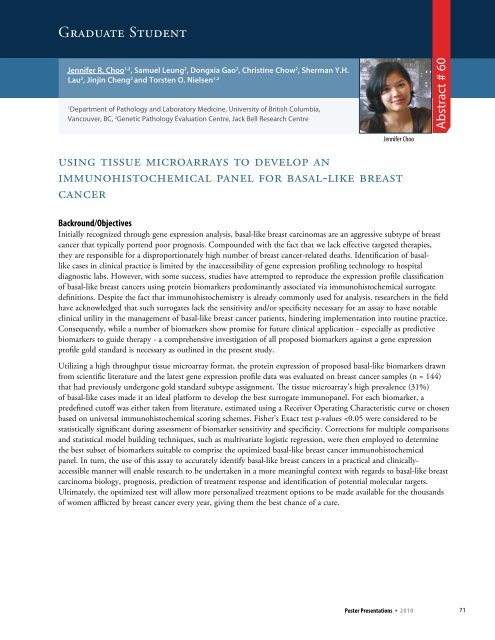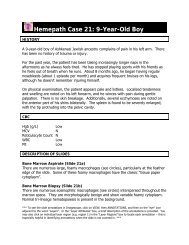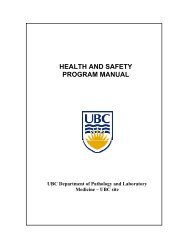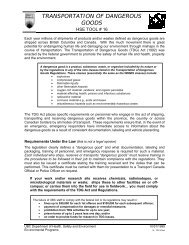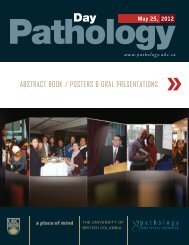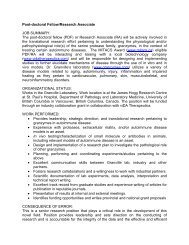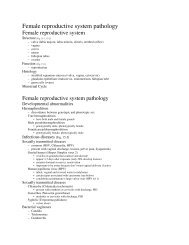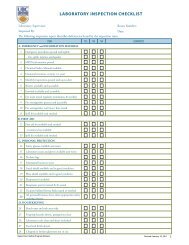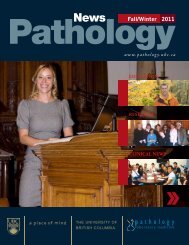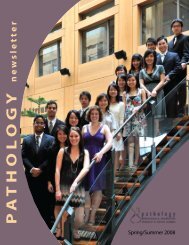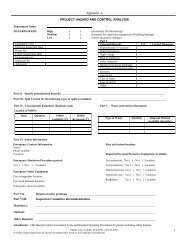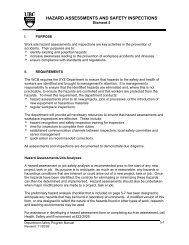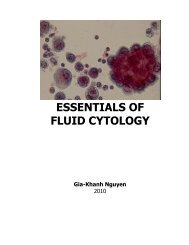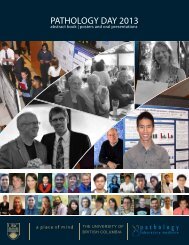Oral Presentations - Pathology and Laboratory Medicine - University ...
Oral Presentations - Pathology and Laboratory Medicine - University ...
Oral Presentations - Pathology and Laboratory Medicine - University ...
You also want an ePaper? Increase the reach of your titles
YUMPU automatically turns print PDFs into web optimized ePapers that Google loves.
Graduate StudentJennifer R. Choo 1,2 , Samuel Leung 2 , Dongxia Gao 2 , Christine Chow 2 , Sherman Y.H.Lau 2 , Jinjin Cheng 2 <strong>and</strong> Torsten O. Nielsen 1,21Department of <strong>Pathology</strong> <strong>and</strong> <strong>Laboratory</strong> <strong>Medicine</strong>, <strong>University</strong> of British Columbia,Vancouver, BC, 2 Genetic <strong>Pathology</strong> Evaluation Centre, Jack Bell Research CentreAbstract # 60Jennifer Choousing tissue microarrays to develop animmunohistochemical panel for basal-like breastcancerBackround/ObjectivesInitially recognized through gene expression analysis, basal-like breast carcinomas are an aggressive subtype of breastcancer that typically portend poor prognosis. Compounded with the fact that we lack effective targeted therapies,they are responsible for a disproportionately high number of breast cancer-related deaths. Identification of basallikecases in clinical practice is limited by the inaccessibility of gene expression profiling technology to hospitaldiagnostic labs. However, with some success, studies have attempted to reproduce the expression profile classificationof basal-like breast cancers using protein biomarkers predominantly associated via immunohistochemical surrogatedefinitions. Despite the fact that immunohistochemistry is already commonly used for analysis, researchers in the fieldhave acknowledged that such surrogates lack the sensitivity <strong>and</strong>/or specificity necessary for an assay to have notableclinical utility in the management of basal-like breast cancer patients, hindering implementation into routine practice.Consequently, while a number of biomarkers show promise for future clinical application - especially as predictivebiomarkers to guide therapy - a comprehensive investigation of all proposed biomarkers against a gene expressionprofile gold st<strong>and</strong>ard is necessary as outlined in the present study.Utilizing a high throughput tissue microarray format, the protein expression of proposed basal-like biomarkers drawnfrom scientific literature <strong>and</strong> the latest gene expression profile data was evaluated on breast cancer samples (n = 144)that had previously undergone gold st<strong>and</strong>ard subtype assignment. The tissue microarray’s high prevalence (31%)of basal-like cases made it an ideal platform to develop the best surrogate immunopanel. For each biomarker, apredefined cutoff was either taken from literature, estimated using a Receiver Operating Characteristic curve or chosenbased on universal immunohistochemical scoring schemes. Fisher’s Exact test p-values


